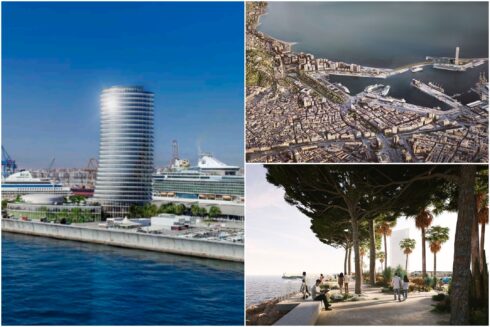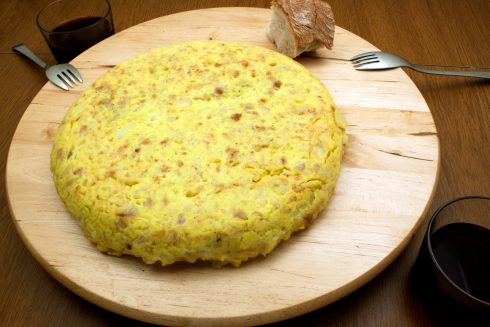By Tom Powell
DIPPING your feet in the cool Mediterranean, in a Nerja cove backed by a buzzing town with bars, restaurants, tapas and ice cream, is a wonderful experience.
But the first sip of beer as you gaze out across the breath-taking Axarquia landscape from the hill-top village of Comares – following an epic drive through mighty mountains and whitewashed pueblos – is simply unbeatable.
The Axarquia is best appreciated when you head inland from the coast, and the transition from Nerja’s tourist hum to tranquil mountain beauty doesn’t take long.
Within minutes of leaving the beaches behind me in the morning sun, I was ascending up a winding mountain road, marveling at the mountains specked with isolated white homes as if they had been sprinkled on the landscape like hundreds and thousands.
My first stop was in Archez, nestled in the foothills of the Sierra Almijara, and it set the bar high. The only noise came from a stream trickling down from the mountains above and the distant engine of a tractor.
A street so narrow that obese tourists could struggle to pass led to a charming mini-plaza with geraniums adorning houses and the quaint church of Nuestra Senora de La Encarnacion.
The eye-catching fourteenth century tower is the minaret of an earlier mosque, the clearest evidence of Archez’s Moorish roots.
Five kilometres further on sits gleaming white Salares below the Maroma mountain. This elegant village, built on olive oil and wine production, is the smallest municipality in the Axarquia. But make sure to stop.
The mazy streets are home to plump old ladies snoozing in the morning sun, colourful potted plants and the odd child playing. On the other side of town stands an ancient stone footbridge that radiates a true sense of adventure and history, like something out of Tolkien’s Shire.
Beautiful little pueblos, pickled in hundreds of years of Andalucian sunshine, began to fade into each other as I continued to cruise the mountain roads – not entirely sure if I was heading remotely in the right direction.
My drive roughly followed the Mudejar route, which takes in five Moorish villages and countless incredible views.
I passed through Sedella, Canillas de Aceituno and La Vinuela, each with their individual towers and arches, plazas and piles of potted geraniums. The latter is, by local standards, a ‘new’ pueblo as it was only formally recognised in 1764.
The landscape is so relentlessly spectacular that I felt guilty for not stopping at every single viewpoint and giving it the five minutes gawping it demanded. But I would never have made it to Comares.
Although a day spent journeying between these villages is still highly enviable. The roads were sensational – the kind you see on Top Gear when they’re testing supercars. And the cyclists obviously thought so too, often found tackling mountain climbs in their droves.
The first glimpse of the Vinuela reservoir – just outside Canillas de Aceituno – made me desperate to drop everything and dive head-first into its sparkling blue waters.
The turquoise reservoir helps supply the city of Malaga but has also seen a recent boom in housing construction on its shores. The area is home to plenty of expat British and increasingly Scandinavians, Dutch and Germans.
Their main hive is the legendary Puente de Don Manuel, where they can count on a cluster of English stores, an Irish bar, great fish and chips and conveniently a curry house.
It was from near here that I suddenly spotted what looked like a white crown adorning a hilltop on the other side of the lake. It took me a few minutes to realise that this snow-cap cluster was Comares, my garret for the night.
This spectacular place gives a whole new level of meaning to ‘mountain-clinging’. It looked majestic and intriguing up high and compelled me to focus on the destination, having indulged in the journey all morning.
Benamargosa was my penultimate stopping point, another impeccably white village this time surrounded by citrus orchards and avocado and mango plantations.
From there the corkscrew road to Comares climbed higher and higher, but its death-defying hairpin bends were worth it. It was all leading up to that moment when I stood atop the mountain and gazed out at this sublime region. Sierras dressed in a patchwork of pueblos, plantations, winding roads and isolated homesteads spilled down towards the sparkling coast where Torre del Mar can be seen hugging the shore.
There is a walking route around Comares laid out by pretty ceramic footprints, taking in numerous miradors, the Castillo, the peaceful cemetery and ending back in the central square. The remains of the Moorish fort stand highest of all.
It turned out to be the stronghold of ninth century rebel leader Ibn Hafsun – here and at nearby and appropriately named Masmullah – who is recognised by information boards across the village.
I found myself completely alone in this serene place, bar the occasional locals sweeping outside their home. Despite being very small, it took me a long time to walk around as I couldn’t help but stop and admire the view every few minutes.
The square – where I tucked into a gigantic portion of fried pork and chips – was only made louder by the snoring of a middle-aged man, slouched against his front door.
There is no escaping the heat up on the mountain though and I was aggrieved to discover the municipal pool is only open in the summer months.
The Axarquia is undoubtedly a hiker’s paradise. There are many clearly signposted routes heading out of Comares and infinite more that aren’t publicised in leaflets.
After taking a short walk around the edges of the village I headed back to my hotel located on the road into Comares, Hostal Atalaya.
It is a simple yet charming place to stay, with legs of ham, jugs of wine and quirky lamps hanging from wooden beams in the bar. I sampled a hearty local speciality called Migas, a dish piled high with fried bread crumbs, spicy sausage, pepper and slices of orange. The kind of stomach-satisfying food I could imagine tasting like heaven after a day laboring in the Axarquia sun.
After filling up further with plump, juicy olives and fried white fish, I retired to the hotel’s south-facing balcony to feast instead upon night-time views of the Axarquia.
The villages twinkled and the coastal towns shone, while a donkey wheezed its way back up the mountain road below me.
The tourist leaflets refer to Comares as the Balcon de la Axarquia (balcony of Axarquia), but I can’t help but feel that is an understatement. It’s the crown.








